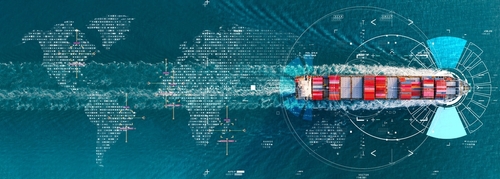Want to save millions? Maybe even billions? According to my panelists on Monday morning, September 27th, at The Council of Supply Chain Management (CSCMP), it comes down to rethinking the “How” and “What” of Distribution Requirements Planning (DRP).
DRP, MRP and ERP are push-based applications. They work from the inside of the enterprise out. Demand-driven value networks, a more effective design, require a pull-based signal from the outside-in. They also require flexibiity. These traditional systems are rigid. The response is based on fixed, often inflexible rules. When demand volatility is low and inventory costs inconsequential, there is little impetus to change. However, in this time, of rising supply chain risk, increasing volatility, and pressure on working capital, two companies– Conair and Procter & Gamble— partnered with two best of breed vendors to tackle the problem with two very different, but synergistic approaches. This was the topic of my panel. I was joined by Jake Barr, Global Director of Procter & Gamble; Robert Byrne of Terra Technology; Jon Harding, CIO of Conair; and Steve DeAngelis, CEO of Enterra Solutions. Here I share insights from the panel.
Conair tackled the “how” of replenishment. Known for the iconic hair dryer, Conair manufacturers a wide range of hair accessories and appliances. The company is privately held with revenues of 1 Billion. A competitive industry, Conair shifted 90% of production to China to reduce costs. However, in the face of rising costs of compliance fees, the COO of Conair searched for a solution. (Compliance fees equal 2.7% of revenues for consumer durable industry manufacturers. They affect the balance sheet in the form of deductions.)
It is a tough problem. Retailer rules change frequently, often with little notice. The system for rule publication is not very sophisticated: often ad-hoc posting on the retailer’s portal. Conair threw people at the problem, but they could not keep up. Through a unique set of circumstances, the COO of Conair discovered Enterra Solutions. Enterra, fresh from building rules-based ontology solutions (artificial intelligence) to help sense security issues in the middle east, went to work on the problem. They built a system that senses rule changes, gives early warning on potential incidents and serves as a system of record to improve deduction resolution. Within 9 months, the solution saved Conair millions in fines and reduced staffing. It is so successful, that Enterra is now packaging the Software as a Service (SaaS) solution to help other manufacturers. For more on the Conair story, listen to the video  of Jon Harding, CIO of Conair http://rufuslusk.com/Conair/101910am_jonharding_rough.mov.
of Jon Harding, CIO of Conair http://rufuslusk.com/Conair/101910am_jonharding_rough.mov.
For most companies in the room, the “what” of DRP, or changing replenishment logic to improve out-of-stocks and prevent short-cycling of manufacturing was top of mind. In this area of the supply chain, P&G is the hands-down leader. For the last six years, Procter & Gamble has been hard at work solving this problem by improving demand sensing. In the words of Jake Barr, Global Director, Procter & Gamble, “We want to produce the products that we need only when we need them. Our systems are lean, and we need to be able to operate with shorter cycles. Demand sensing helps us achieve this.” Jake attributes the implementation of Terra Technology Multi-Enterprise Sensing to improving demand forecast accuracy and reducing billions in inventory. So much so, that he now has a new goal. He now wants to use the supply chain to fuel growth.
Terra Technology’s multi-enterprise demand sensing engine uses multiple forms of downstream data– store transactions, retailer warehouse inventories, retailer shipments and orders– to find the best combination of downstream data to represent the true need for channel replenishment. The signal is used in the short-term horizon (one to four weeks) to set inventory targets and align supply. It has been successfully deployed in both modern trade and emerging economy supply chains. When asked by the audience, if this made the supply chain “twitchy”, Jake smiled. Why? Underlying Jake’s success to use the better signal from Terra Technology is P&G’s hard work on short-cycle, right-first-time manufacturing.
In the face of the need for more flexible, dynamic supply chains, the traditional definitions of Advanced Planning Solutions (APS) and Enterprise Resource Planning (ERP) are crumbling. Companies are turning to new players and new techniques. This type of innovation, I think, will define the true supply chain of the future.
What do you think? Have you seen any promising technologies that you would like to share?
Next week, I am speaking at Altimeter’s first conference, Rise of Social Commerce. I am pleased to report that we are sold out. Follow the tweet stream using hashtag #RSC10 and watch it on Ustream on channel http://www.ustream.tv/rsc10. We have some exciting research to share!

Thirteen Years a Blogger
Thirteen years. 600 posts. Where does time go? For over a decade, since founding Supply Chain Insights in 2012, I have pounded the keyboard, asking





